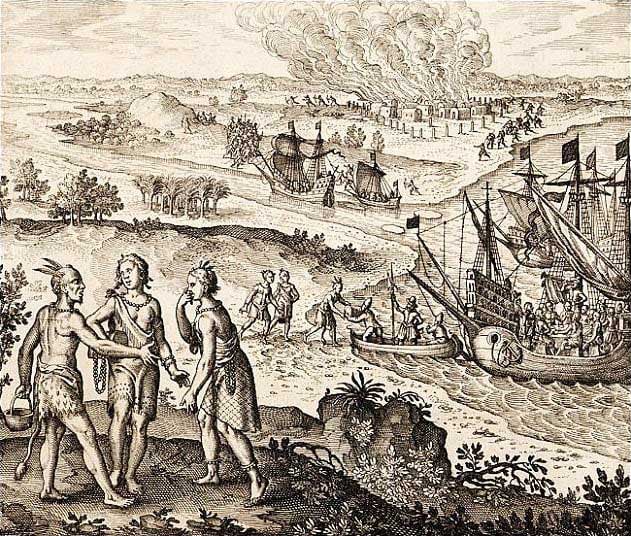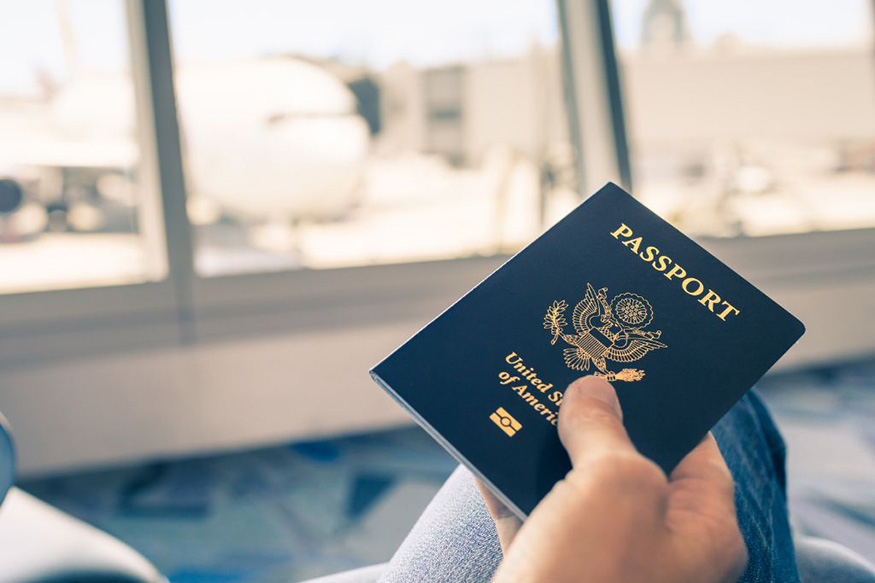Who?
Pocahontas (born Matoaka and later known as Rebecca Rolfe) was a Native American woman who is known for helping English colonists in America and for her role as an ambassador between the Powhatan Chiefdom and the Jamestown colony. Later having been captured, converted to Christianity and married to an Englishman, she is also remembered as an example of a Native American who assimilated to the English way of life, which was used as propaganda in the early 17th century.

Image courtesy of Wikimedia Commons
What?
It is important to note that what is known about Pocahontas and her life comes only from others. Her story is told through written historical accounts and the oral histories of her people; there is no record of her own accounts or thoughts. The favorite daughter of Native American Chief Powhatan, Pocahontas’ real name was “Matoaka.” She was given the nickname and is more commonly known as “Pocahontas,” which means “playful one,” and appropriately captures her personality based on historical records. Pocahontas would have been about 11 years old when the English settlers first arrived to Jamestown (in modern-day U.S. state of Virginia), which was settled in May 1607. It would not be until that winter that she would come into contact with the Englishmen for the first time.
Where?
The Powhatan Chiefdom stretched throughout the Chesapeake Bay area and through what are now the states of Virginia, parts of North Carolina, Maryland and Washington, D.C. More than 30 Algonquian speaking tribes inhabited this area—with a population of about 25,000. Once the English arrived, they began to interact with the Native Americans who already lived there. In the winter of 1607, the Powhatan Chief’s brother captured Captain John Smith, thus beginning the famous story of Pocahontas and John Smith, as depicted in the Disney movie Pocahontas. Smith wrote about how Pocahontas saved him from execution by placing her head upon his before his own was to be smashed by clubs. This is widely debated and some theories pose that the execution was rather an elaborate ceremony, which Smith may have misunderstood. Regardless, this event signified the beginning of a trade relationship between the Native Americans and the settlers.
Pocahontas was seen as a symbol of peace and often accompanied envoys sent from Chief Powhatan to the starving English settlers. She was also sent to negotiate for the release of Powhatan prisoners. There are also documented notes of her playing with the English children.
When?
By the winter of 1608, English settlers would visit the tribes to trade goods for corn. Eventually the relationship deteriorated and negotiations for food and other items fell apart. There was a drought that reduced the harvest for the year, and the settlers were demanding more and more food. In the fall of 1609, the Chief moved his capital to a river further inland and Pocahontas was no longer allowed to visit Jamestown. Further, Captain John Smith returned to England to treat a severe gunpowder wound, and Pocahontas and her father were told that Smith died en route.
At the age of about 14, Pocahontas is said to have married someone from her tribe named Kocoum and was not seen in Jamestown for around three years. As the hostility between the Native Americans and the English settlers continued, Pocahontas was kidnapped in 1613 by the settlers and held for ransom on an English ship as part of the First Anglo-Powhatan War. The idea was to force the Chief into submission. While held captive near Jamestown, Pocahontas was introduced to Christianity and baptized under the name “Rebecca.” She married prominent English settler and widower John Rolfe in 1614. The English allowed Pocahontas to talk to her father and other relatives to foster diplomacy during her captivity, and according to English sources, Pocahontas told her family that she preferred to remain with the English. Chief Powhatan eventually agreed to a truce, but unfortunately this only lasted until 1622, when relations deteriorated again.
In the years that followed, Pocahontas did not continue as the peaceful intermediary between her tribe and the English but rather was used for propaganda purposes. The plan was to attract new English settlers and investments because Pocahontas was seen as an example of successful missionary work and the idea that the Native Americans could be persuaded to become more “English-like.” Pocahontas, her husband and their son (who was born in 1615) were brought with some other Native Americans to England where they met with many prominent figures. Pocahontas became ill and passed away at the young age of 22 in March 1617.
Why?
Pocahontas is one of the best-known Native Americans in U.S. history. Her life has inspired many books, artwork and films. While Pocahontas has been linked romantically to John Smith, there is much doubt over the nature of their relationship and whether she really “saved” him from execution, since Smith did not reveal this in his early writings. The real truth surrounding Pocahontas’ life is known through the interpretation of various oral and written accounts, which unfortunately often contradict each other. Pocahontas is still an important historical figure to know and understand for her role in mediating conflicts between her people and the colonists and providing them with the food and tools to survive.
Learn More:
- Two-minute biographical video
- Visit Jamestown, Virginia, site of the first permanent English settlement in North America
- Further reading
Sources:




